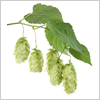
 World: Preliminary hop crop results show increase in global alpha production
World: Preliminary hop crop results show increase in global alpha production
The preliminary 2017 crop results published on November 6th by the Barth-Haas Group show global alpha output this year is estimated at 10,901 tonnes versus 10,525 tonnes in 2016.
Alpha production is down in the EU (4,871 tonnes versus 5,537 tonnes last year), with declines registered in Germany, the Czech Republic, Poland, and Slovenia, while the US output is estimated to have increased to 5,070 tonnes from 4,054 tonnes last year.
Germany has harvested a disappointing crop overall, the Barth-Haas Group said. After facing disaster in mid-July as a result of a very hot and dry June, the German crop recovered reasonably well in August thanks to good precipitation leading up to harvest. In the end, yields were only slightly below long-term averages, but alpha acid levels are noticeably below their 10-year averages. In two varieties (Hersbrucker and Saphir) a few contracts are affected by the “alpha-clause”. Overall total alpha production is roughly 250 tonnes below expectations (3,950 to vs. 4,200 tonnes).
The quality of the hops is generally good in Germany. Pests and diseases did not cause a problem in the 2017 crop and hops have good physical appearance and nice aroma.
The US crop came in with good yields and alphas slightly exceeding expectations. The US has produced in excess of 48,000 tonnes (105 million lbs) equating to approx. 5,100 tonnes of alpha. Quality in this major growing area is also very satisfactory and without the usual problems of powdery mildew and mites often seen in recent years.
The Czech Republic and Poland are enjoying good crops, but again alpha acid levels are lower than expected and put a dent on the good weight yields. Slovenia came in a bit weak and there, too, alphas are disappointing (Bobek and Celeia). While the UK had a very good crop (about 250 tonnes above expected production), Spain suffered a blow from a severe hail storm that left the crop short by about 30% (300 tonnes).
The Barth-Haas Group estimates the worldwide hop production of the 2017 crop to amount to approx. 114,000 tonnes equating to 10,950 tonnes of alpha (measured at time of harvest). This is very close to expectations based on average yields and alpha contents.
While an average crop worldwide should not seem to be alarming, the hop industry is actually going through an extended period of structural undersupply with hop acreage trying to play catch-up with continuously increasing demand, the Barth experts said.
It is well known that the craft industry has been a major driver of the increase in hop demand with its high usage of hops. The hop industry, especially US growers, has forcefully responded to the demand for flavor hops and has radically expanded the acreage of aroma varieties, but at the expense of high alpha. The gap between supply and demand for high alpha hops was mostly served out of accumulated inventories from the previous cycle of oversupply but these stocks had been fully depleted by the summer and hop demand for brewing year 2018 need to be filled almost entirely with hops from the 2017 crop. Crop 2017 has produced about 4,800 tonnes of alpha in high alpha varieties while we estimate worldwide demand to be near 6,000 to of alpha including advanced hop products and “beyond brewing” needs. In the US high alpha production dropped from about 4,500 to alpha in 2009 to 1,700 to alpha in 2016 while the German production expanded by only 700 to of alpha in the same period. The steep decline in US production was therefore only partially offset by the expansion in Germany. The resulting deficit was covered by a depletion of accumulated inventories.
The shortfall of available high alpha volumes for spot demand has become very quickly apparent and prices have risen sharply in the grower markets as a consequence.
In the aroma market varieties such as Perle, Hallertau Tradition and Select are in short supply as a result of below average alpha levels whereas the supply of noble aroma hops such as Saazer and Tettnanger now seems to suffice for current levels of demand. US flavor hops, which now represent nearly 80% of the US acreage, particularly the public varieties, have expanded beyond the level of demand with spot prices below their contract prices as consequence.
With crops 2018 and 2019 already highly contracted forward in Europe, market activity has moved into crops 2020-25 and sizeable volumes have recently been bought by the trade and by brewers. Forward contracting remains the best tool to ensure supply at a known price and signal to growers what varieties and volumes will be needed in the future. Forward contracting, while an essential tool of risk management, must be based on prudent sales forecasting to avoid over-contracting, a phenomenon that exacerbates rather than attenuates market volatility and cycles of over- and underproduction.
Regresar
E-malt.com, la fuente de información global para los profesionales de la industria cervecera y de malteado. Los boletines quincenales de E-malt.com incluyen las últimas noticias de la industria, estadísticas en gráficos y tablas, precios mundiales de cebada y malta, y otra información relevante. Haga clic aquí para obtener acceso completo a E-malt.com. Si usted es un cliente de Castle Malting, puede obtener acceso gratuito al sitio web y publicaciones de E-malt.com. Contáctenos para obtener más información en marketing@castlemalting.com.





